
We quite often lament when we see our kids glued to the TV or phone. Especially during the pandemic when taking them outdoors seems highly impossible. And thus, as we watch a generation of children find entertainment in gadgets and technology, we cannot help wondering and remembering the games of yesteryears. Those were the traditional games that took up a large stock of our time after school. They kept us on our feet, quite literally, running around on quiet streets or terraces. They helped us learn about teamwork and deep friendships. And of course, about a childhood that has shaped our lives forever.
So what are these traditional games that I am harping on about? How are they special and different from the Candy Crushes and Counter Strikes of today? Let’s take a look at 10 traditional games of India that have defined childhood for entire generations. This list comprises both indoor and outdoor games, and hence, it is beneficial for both physical and mental strength.
1. Kabaddi

Let’s begin with one of the best-known games of the country. A game played without any gear or equipment it is based on pure strength and strategy. Played between two teams the game involves a single player from each team trying to touch down and break into the area of the opponent team. The player needs to touch as many players of the opposite team while reaching the line. And all of this while humming ‘kabaddi’. It certainly is a game that can keep you on the edge of your seat.
2. Kho-kho

Again a team sport, Kho Kho is particularly popular in schools. The first team sits in alternating directions while the other team runs around them. The aim is for the sitting team to catch as many from the running team. But it’s a sport that requires strategy and presence of mind. A player from the team sitting starts the game and touches his teammate to continue the chase.
3. Kancha or Lakhoti
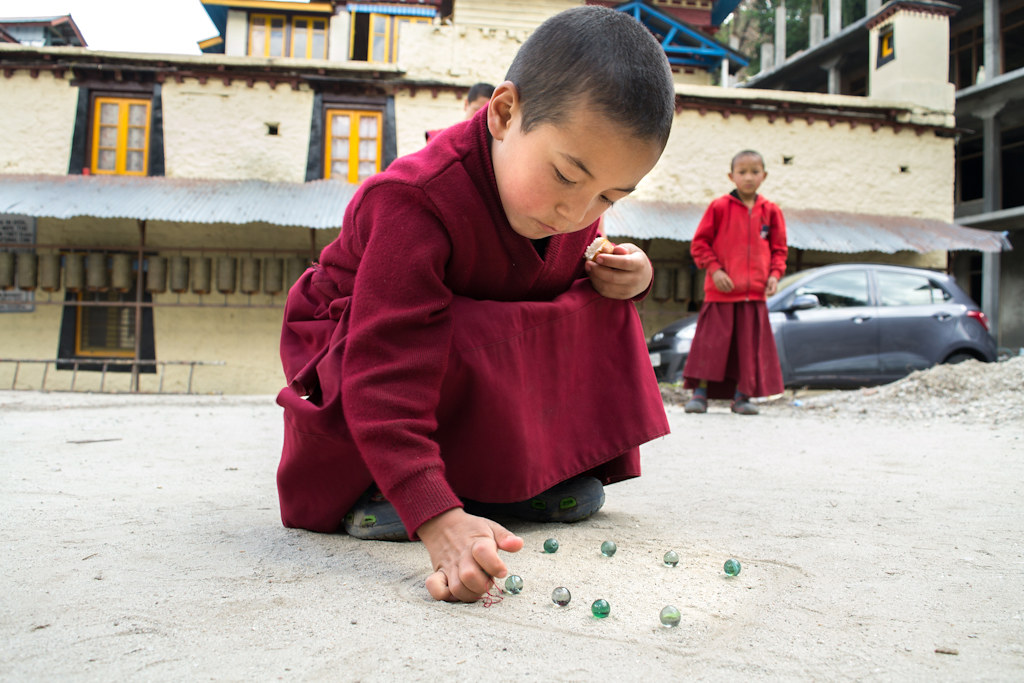
Played with our dear old marbles, kancha or lakhoti is also known as golli or goti. The game is about trying to strike a particular marble amidst many, using another marble. The striker marble is held between the middle finger of one hand and pulled by another before release. There is no set limit to the number of players who can play this game.
4. Hopscotch or Nondi

The Indian version of one of the most well-known childhood games of all time, nondi (in Tamil Nadu) is also called stapoo and kith kith. A ladder grid is drawn on the floor and numbered. A stone or any other object is then thrown on any of the numbers, and the player has to hop their way to the numbered block without stepping on the edges or any other block. Played inside apartment stairways or flat surfaces, this game sticks out as an easy game to play in both large and small groups.
5. Gilli Danda
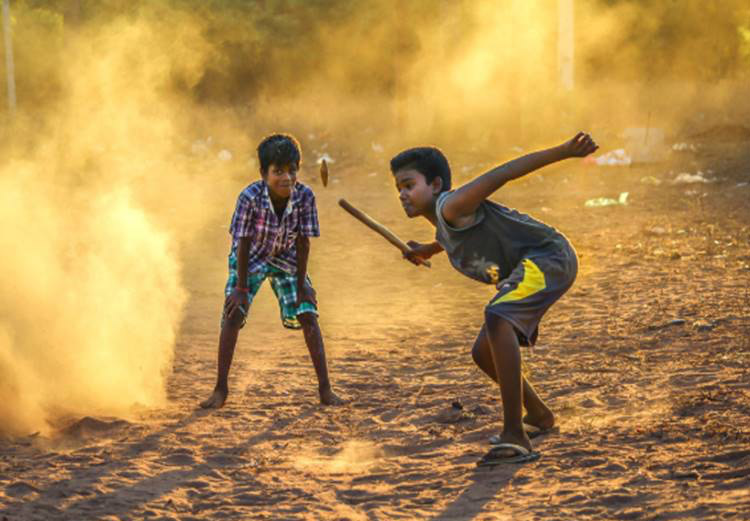
Alright, we have probably heard this phrase several times. But how many of us really know what this game entails? Gilli Danda is a sort of fusion game between cricket and baseball. The Gilli is a small stick that needs to be hit by the danda or the longer stick as far as one can. After hitting the Gilli, the player needs to run to a particular point before the opponent team can retrieve the Gilli. Gilli danda is also known as Lippa in some parts of India.
6. Lattoo

Another popular term lattoo quite literally means the spinning top. Though the word is also used often in various other meanings and forms, the game itself is pretty simple. It is all about making the top spin for the longest amount of time. And also, mastering the skill of lifting the moving top off with the string. The tops were initially made of clay and later replaced with wood. However, one can find many different tops today in the market, some even with lights and sound effects.
7. Chaupar

One of the oldest indoor games of India, Chaupar finds mention in the epic Mahabharata. Also called Pachisi, this board game was extremely popular in ancient times. Played with pawns or shells the dice is rolled and the players strategize the movement of their pawns. Pachisi can be better understood as an older version of the modern-day Ludo.
8. Pallankuli
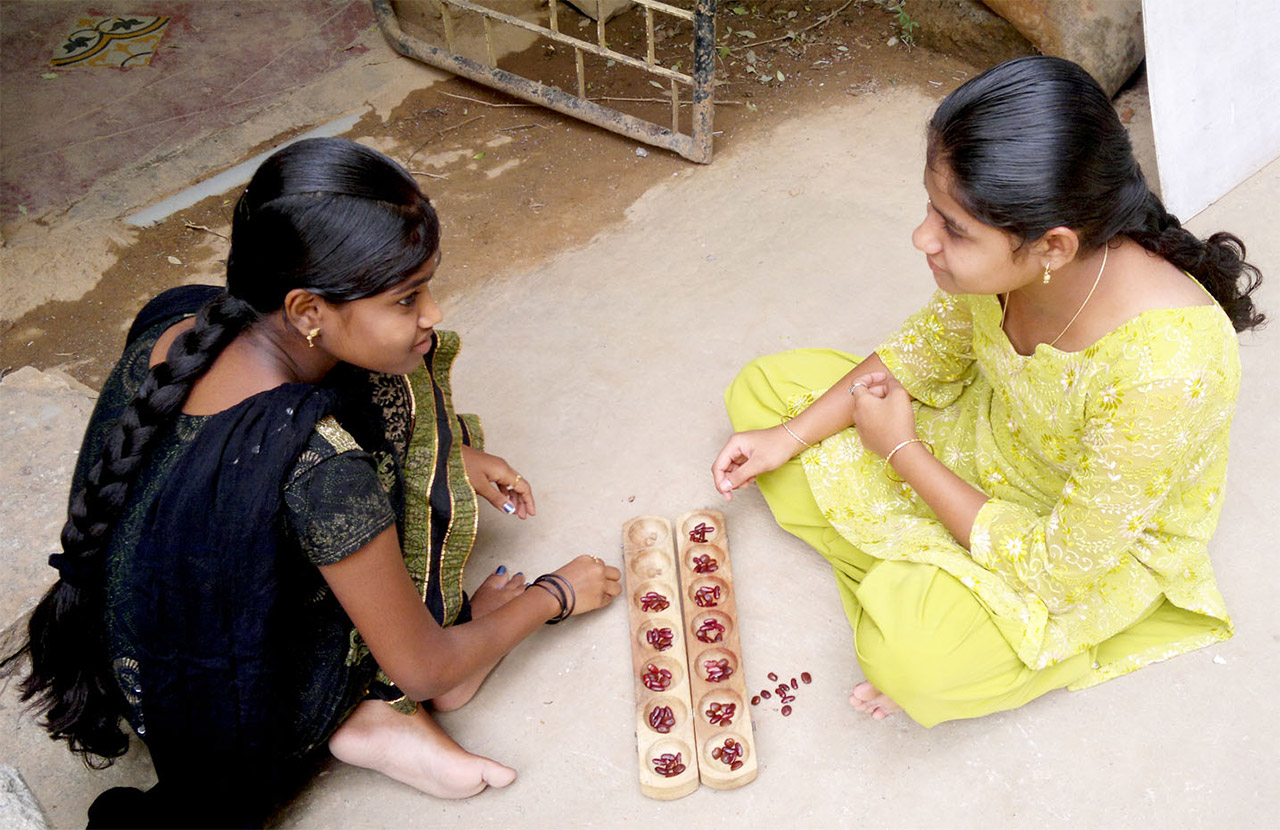
Another indoor game Pallankuli finds its origins in South India. Played earliest in Tamil Nadu the game spread throughout the southern states and even to Sri Lanka and Malaysia. Played on a board that consists of rounded or cup-like columns the game is played with seeds or shells. The idea is to move the shells or seeds from one cup to another in a clockwise direction till the cups are empty.
9. Lagori
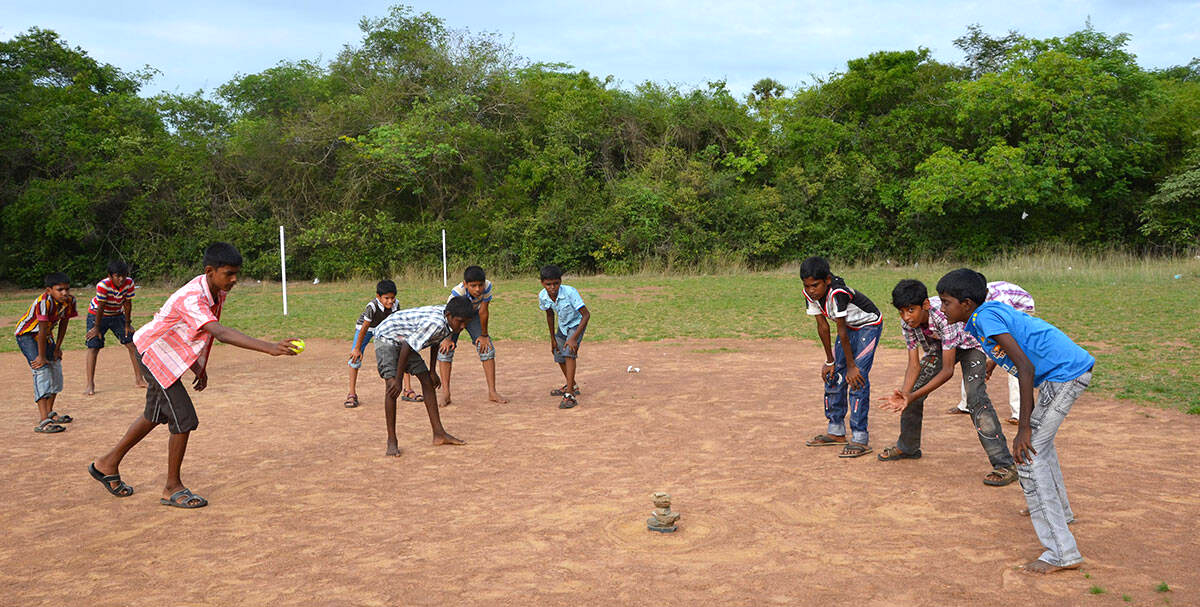
A common street game one might often have seen children trying to topple off a stack of stones. One player from the team gets three chances to knock off the pile of seven stones with a ball. The entire team then tries to restore the stack before being out. Played with two teams it’s a great game that requires minimal props. This game is known by different names, including pithoo, satoliya, and more.
10. Antakshari
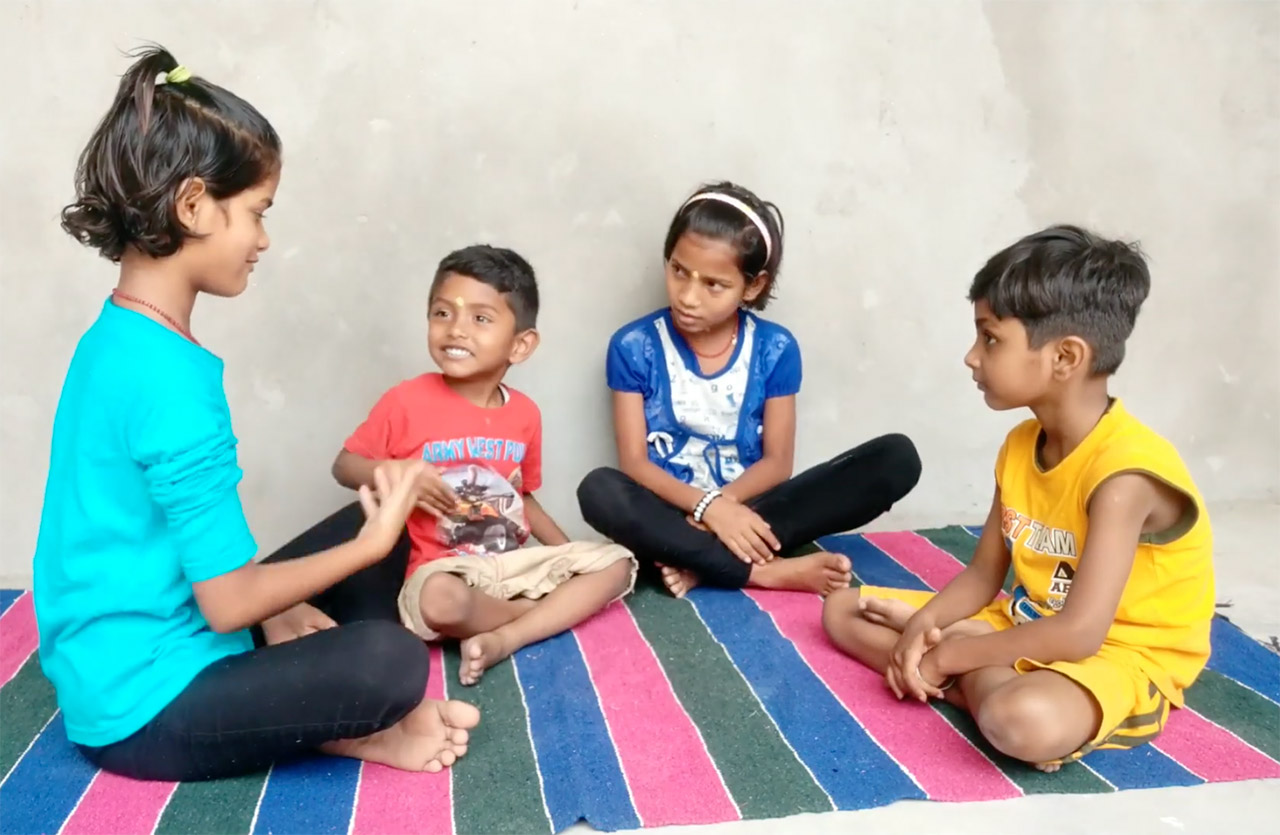
This is a standard and staple game which has probably left its mark on family functions, social events, train journeys and much more. A fun game filled with music and lots of soul, Antakshari is one of the most loved and played game. Perfect for any occasion, it consists of two teams. The first team starts singing, and the last letter of where they leave off the song is the letter that the other team picks up and begins a new song. This game can go on forever and lightens up the mood with rhythm and music.
11. Moksha Patam

Moksha Patam, also known as Gyan Chaupar, is a medieval Indian board game. It was typically played on a cloth board with a succession of squares. Some of the most complex boards included additional iconographies, such as portraits or ornate borders. It was a board game used by religious authorities to educate the distinction between good and evil, with ladders symbolising good and snakes representing evil. The game’s oldest surviving example is from seventeenth-century Mewar. Moksha Patam found its way to Britain in the 1890s when it was named Snakes and Ladders. While the British version preserved some focus on moral principles – with images of good and evil behaviours on the squares that bookended each ladder or snake – it did away with the Indian version’s spiritual undertones and complexities. This 2-4 person game has a long history of popularity and may be enjoyed by individuals of all ages.
12. Chupan Chupai

This is a popular children’s game also known as ‘Luka Chuppi’ or ‘Chupan Chupai.’ The premise is that any number of players can hide in a predetermined area that one or more searchers must locate. While the other players wait, one player chooses to close their eyes and count the game to a specific number. After hitting this number, the player who is “it” yells out, “Ready or not, here I come!” and then attempts to locate the hiding players. Hide-and-seek is another name for this game. This game, however, required the capture of all participants. When one person is caught, the others pitch in to try to find the other concealed participants. The chain becomes longer when each captured player joins.
13. Aankh Micholi

Aankh Micholi is a popular outdoor group game for youngsters aged 5 to 12. This group game is actively played by both boys and girls. The denner, one of the participants, is blinded with a piece of cloth. While blindfolded, the denner must grab one of the other participants. All other players disperse in the wide space in order to escape being captured by the denner. The players are permitted to produce sounds in order to provide indications for the direction to the denner. The denner’s turn ends when he or she is able to catch one of the participants. The denner’s turn ends when he or she is able to catch one of the participants. This person now becomes the denner for the following turn, and the game continues until all players agree to stop it. This game helps players build sensory abilities, awareness, and a sense of hearing. The denner, or blinded player, must make spatial judgments based on his listening talents. This assists the denner in improving his or her ability to be attentive and have a sense of sound at all times. This game also aids in the development of touch sense.
14. Vish-amrit

Vish Amrit is a popular childhood game among children aged 3 to 12 in several regions of the country. Vish means ‘poison’ and Amrit means ‘nectar’ in Sanskrit. It is a popular group chase game. This game is often known as Lock and Key in cities. The denner, one of the participants, is blinded by a piece of cloth. While blindfolded, the denner must grab one of the other participants. All other players disperse in the wide space in order to escape being captured by the denner. The players are permitted to produce sounds in order to provide indications for the direction to the denner. The denner’s turn ends when he or she is able to catch one of the participants. This person now becomes the denner for the following turn, and the game continues until all players agree to stop it. This game helps players build sensory abilities, awareness, and a sense of hearing. The denner, or blinded player, must make spatial judgments based on his listening talents. This assists the denner in improving his or her ability to be attentive and have a sense of sound at all times. This game also aids in the development of touch sensitivity.
There are many other games that most of us can easily remember and recognize. Hide and seek or chuppam chhuppi, langdi, gutte, chain chain, four corners, lock and key, maram pitthi (similar to dodgeball) and many more such games have been an integral part of our lives as children.
15. Poshm Pa
A classic Indian kid’s game called “Posham Pa” captures the simplicity and delight of early play. It can be played in a room or outside with a group of friends, and all that is needed is a playful spirit and the desire to have fun. As the other players disperse and conceal, one player closes their eyes and counts. When the counting is complete, the seeker opens their eyes and departs in search of their companions who are hiding. As they search, the seeker yells, “Posham Pa!” and, when they discover a concealed friend, they dash back to the beginning to catch them before they can escape.
It’s a game that builds relationships between players and fosters treasured memories via strategy, stealth, and laughter. Posham Pa embodies unrestricted delight, bringing back memories of the joy of childhood activities and the small pleasures of companionship.
Traditional Indian games today.
Traditional Indian games today
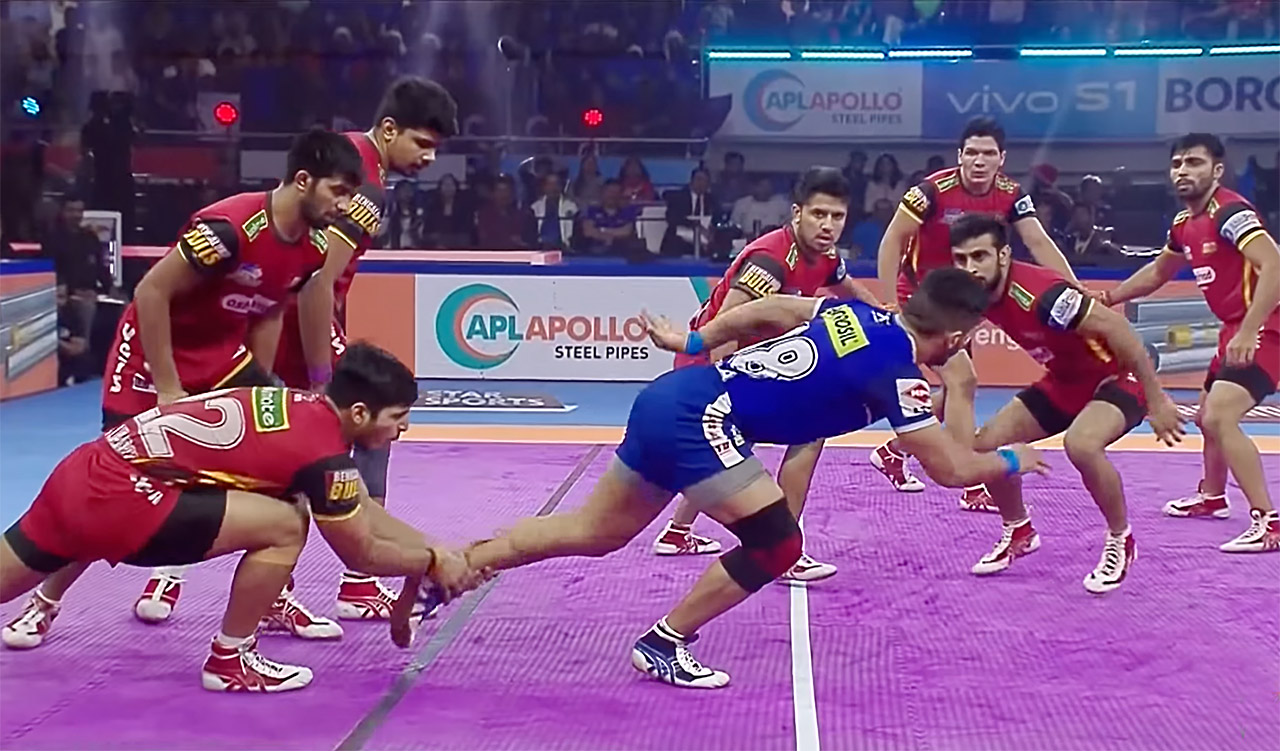
Of course, technology has overpowered our lives today. Children are happy playing video games or online sports. Yet, one cannot say that childhood games have disappeared or lost their importance. Even today, in apartments or closed localities, children often meet up in evenings to play. Their games might include cricket and football too, but the traditional games continue to hold forte in their little hearts and minds.
On the other hand, some traditional games such as kabaddi have thankfully made a huge comeback with the backing of sponsors and sports channels. With leagues and the support of popular sporting and other celebrities taking interest in the game, kabaddi is surely being showcased on larger platforms. Similarly, kho-kho is also trying to find its place and remains a popular game especially at school.
Why are Indian traditional games important?
Any sport or game should be given an important place in the routine and curriculum of a child. Sports help to build physical and mental strength of its players. However, with traditional games, the biggest advantage is its ad hoc existence. It does not require expensive infrastructure or dedicated coaching. Though the more popular games, such as kabaddi and kho kho do have international tournaments, aside from these the other games are pretty much localized. The true flavour of these games lies in their accessibility and ease of play.
Suggested Read – Traditional Toys of India: Practice of Culture and Profession
Also, one can look at them from a traditional, social and cultural aspect too. Children get together in their free time and form a camaraderie that helps them build social and cultural bonds. These children come from different families, religions and social backgrounds. Yet, they find a common ideology and strategy plan while coming together to play these games. Whether the children are in rural or urban areas, or from any economic strata, these games do not require them to be anything additional than themselves. Also, not to forget the understanding of real team spirit is often nurtured unaware through unassuming traditional games.
Not for Kids Alone
Traditional games are not necessarily limited to kids alone. Some of the indoor games can be played by families, and are popular with women. Hopscotch, for example, is often usually played by young girls. Similarly, antakshari is a great game that can be played with teams of varying generations. The essence of these games is to bring people closer and help them interact in constructive ways.
Finally, traditional games in India have a rustic and local flavour to their method and techniques. Their names, as well as the style of playing, are seeped heavily into the local, regional, and cultural nuances of its surroundings. And hence because of this, often these always become much more than mere time passing games. They become a means of building teams, characters, strategies and a deeper understanding of true core values.






😍😍😍😍😍😍😍😍😍😍😍😍😍😍😍😍😊😊😊😊😊😊
Awsome 🙂
Mob:- +91- 8788874146
“Your True Sprit is your Shield”
The Lathi art is used as a means of unarmed self-defense and a way to achieve physical
fitness today. The popularity of lathi Khela is waning. The practice of this art form
throughout the country can increase its popularity and ensure its continued existence, so I
Kindly request each one of you to Promote the Lathi Art and continue This Tradition.
This blog is really helpful to deliver updated educational affairs over internet which is really appraisable. I found one successful example of this truth through this blog. I am going to use such information now.
this is very helpful thanks Caleidoscope
This is helping me for my essay writing 😇🥰😍😌
Thanks Rohit 🙂
I have a quiz coming up on traditional sports of India and this blog really helped me alot. I liked the brief yet thorough descriptions and the pictures.
Wowowwww….we need to bring everything into on stream again…90s kids life will have a reason here after…
We need to give light to all these friends..
Thanks Janushkumaren 🙂